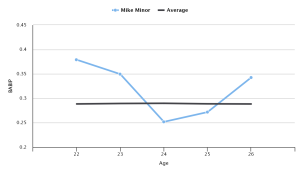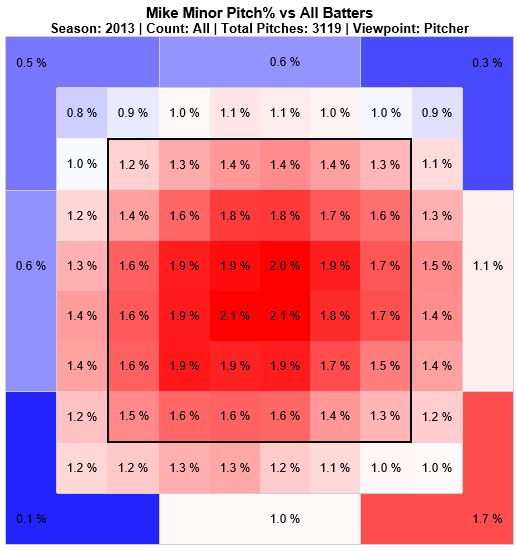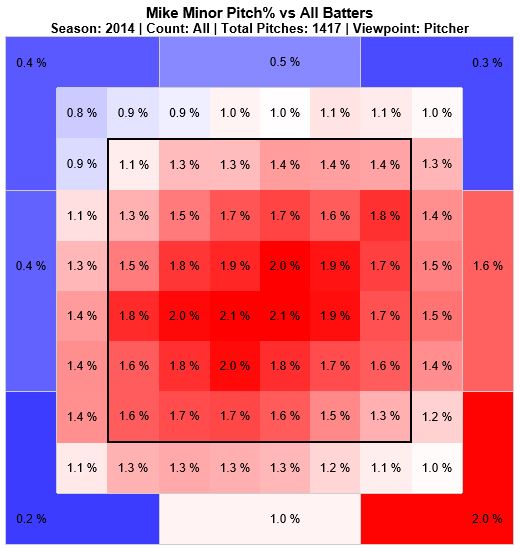“I helped prepare arbitration cases for George three straight years in the 1980’s… George had led the American League in errors the first year that we prepared a case for him. We were wondering what to do about that, so I drew up an exhibit entitled ‘What Was the Cost of George Bell’s Errors?’ The exhibit showed that while Bell had led the league in errors with 11, none of the errors had actually cost his team anything. Of the 11 errors, only about three led to unearned runs, all had occurred in games which Toronto had won anyway, and in those three games, Bell had driven in something like seven runs.”
Bill James, The New Bill James Historical Abstract
The case that Bill James made for George Bell in 1985, and later informed his readers about when he released his Historical Abstract, always fascinated me. As someone who is a big believer that fielding metrics have a long way to go (especially behind the plate), this arbitration case was my Zihuatanejo, that far away place that always gave me hope that errors were really as pointless a statistic as they seemed.
However, as Bill James points out in the rest of George Bell’s player ranking, the fact that nothing came of Bell’s errors in 1985 (his first arbitration year), as well as 1986 and 1987, when James used the same exhibit, was rather noteworthy. Although errors are definitely not the be all and end all of fielding statistics, one would have to imagine that some ill had to come of them, at some point, right?
With the All-Star break upon us, and sadly no real baseball for the last four days, the chance to finally look into this idea of how much errors actually cost the erring player’s team, presented itself. At the halfway point, there were exactly 20 players who had committed 10 or more errors in 2014. Since there was time to kill without baseball on, I decided to pour over some box scores and figure out just how much each of those leading “error-men” had cost their teams. Using baseball-references fielding game logs, it was easy to find the games in which each player had made their errors, and then going through the play-by-play made it (usually) straightforward as to whether their error led to a run or not.
For this study, I created a chart with columns for all of the parts mentioned in Bill James arbitration case: total errors, unearned runs as a result of those errors, games that the team lost when that player committed an error, and RBI in those games that were lost. The final column (RBI in games lost) was tweaked a tiny bit due to the inclusion of one other column. The column added was one called “true losses.” This was the measure of how many games the team lost by equal to, or fewer runs, than the player’s error cost the team. For example, if Pedro Alvarez made an error that cost his team three runs, and the Pirates lost 4-3, that would be a true loss. Or, if Derek Dietrich made an error that cost his team one run, and the Marlins lost 3-2, that would also be a true loss. Finally, if the game went to extra innings and was a loss, any error worth one run or more was counted as a true loss. Therefore, if Josh Donaldson committed an error which cost his team only one run and then the A’s lost 10-8, but that final came in extra innings, then that would still count as a true loss because the extra innings would have never occurred (hypothetically).
Now this is obviously not a foolproof study. There is no way to say for sure that the error committed for one run was any more the cause of the loss than the pitcher who gave up the home run the next inning. It is also starting to get into a bit of a messy “Butterfly Effect” situation, meaning that there is no way of knowing how the rest of the game (or our lives, bro) would be different if Jose Reyes hadn’t booted that grounder in the fifth inning.
However, it was a fun study to put together, and it can be revealing into how little (or in poor Starlin Castro’s case, how much) errors truly change a game. Here’s the official chart:
What Was the Cost of Player X’s Errors?
| Name |
|
Errors |
UER from E |
Team L’s |
True L’s |
RBI in True L’s |
| Pedro Alvarez |
3B |
20 |
11 |
11 |
4 |
4 |
| Josh Donaldson |
3B |
15 |
6 |
5 |
1 |
0 |
| Ian Desmond |
SS |
15 |
10 |
8 |
2 |
2 |
| Asdrubal Cabrera |
SS |
14 |
12 |
9 |
1 |
0 |
| Jose Reyes |
SS |
13 |
7 |
9 |
2 |
0 |
| Brandon Crawford |
SS |
13 |
6 |
5 |
0 |
0 |
| Lonnie Chisenhall |
3B |
13 |
6 |
5 |
0 |
0 |
| Everth Cabrera |
SS |
13 |
7 |
6 |
0 |
0 |
| Brad Miller |
SS |
13 |
7 |
5 |
1 |
0 |
| Martin Prado |
3B |
12 |
13 |
8 |
2 |
2 |
| Jonathan Villar |
SS |
12 |
14 |
8 |
0 |
0 |
| David Wright |
3B |
11 |
5 |
4 |
1 |
0 |
| Starlin Castro |
SS |
11 |
12 |
6 |
5 |
0 |
| Jean Segura |
SS |
11 |
8 |
1 |
0 |
0 |
| Elvis Andrus |
SS |
11 |
7 |
8 |
0 |
0 |
| Yan Gomes |
C |
11 |
4 |
6 |
0 |
0 |
| Chris Owings |
SS |
11 |
8 |
7 |
2 |
1 |
| Derek Dietrich |
2B |
11 |
6 |
5 |
1 |
0 |
| Jarrod Saltalamacchia |
C |
10 |
5 |
7 |
1 |
0 |
| Hanley Ramirez |
SS |
10 |
7 |
7 |
1 |
0 |
Key: UER from E – unearned runs from errors; Team L’s – team losses; True L’s – true losses (described above); RBI in True L’s – how many RBIs the player had in said True Loss games
Let’s tackle this table column by column.
Well, I don’t think a historiography of each player’s name is necessary in today’s article, so let’s skip over to the position column. It is interesting to note how many left-side of the infield players there are atop the error leaderboard. There’s nobody from the outfield to be found (the “top” outfielder per errors is Sports Illustrated cover boy, George Springer with seven), and there are only three players that don’t hail from third base or short stop as their main position. One branch off of this study that could be interesting would be to look at whether or not there was a correlation between a player’s position on the diamond, and how frequently an error led to runs or “true losses.” My gut instinct would be to guess no, but maybe errors in the outfield are often for more bases, and therefore more likely to lead to a run – just a hypothesis.
Jumping over to the errors column, Alvarez’s 20 errors stood out, as the difference between his total and the second place total is the same as the difference between second place total and the bottom of our table. In fact, seeing that high total made me curious as to just how many errors it would take to get into the record books. Well, if you’re including the entire history of baseball, the answer is: like a bajillion. Obviously the game was entirely different, but it’s hard to imagine that Herman Long’s 122 errors in 1889 weren’t embarrassing even back then. The record for errors in a single season since 1952 is 44 by Robin Yount in 1975, and the record since 1980 is Jose Offerman with 42 in 1992. So while Alvarez’s 20 errors may be pacing the league by a good margin now, it’s fair to say he won’t be joining even the modern record books this season.
The next column looks at unearned runs derived from each player’s errors, and the variance is quite extreme. With a range from only four runs (it’s interesting to note that the catchers have the two lowest unearned runs tallies, maybe that positional study would provide some analysis after all) all the way up to 14, there doesn’t seem to be too close of a connection between the amount of errors and the amount of unearned runs. For instance, Josh Donaldson has committed three more errors than Jonathan Villar in 2014, but Villar’s errors have led to eight more runs. This brings up the question of whether unearned run prevention is simply luck, or whether some teams (and pitchers) respond better after an error is committed in the field.
The A’s are one of baseball’s best teams, and have an excellent pitching staff, so it isn’t too surprising that Donaldson’s unearned runs are among the lowest, especially in comparison to how many errors he has committed. On the other end of the spectrum are players like Altuve and Castro who play on rebuilding teams, and it is unsurprising to see their names next to some of the highest unearned run totals. However, there is most certainly a lot to be said for luck playing a role in how many unearned runs come along after an error. For example, teammates Asdrubal Cabrera and Lonnie Chisenhall find themselves on opposite ends of the spectrum in terms of unearned runs after errors, a definite sign of the role random chance plays in unearned run prevention.
One other note on the extreme variance in unearned runs tied to errors. The variance could also come as the result of what kind of error was made. A bobbled ball that never even gets thrown across the infield does only one base of harm; whereas, an overthrow (many of Alvarez’s errors) may lead to two bases of harm. One could also try to really dig deep into this data and see if younger, more inexperienced players were more likely to commit errors late in games, when the pressure was ratcheted up, and maybe those errors were more likely to be costly. However, with this study, the idea is simply to get a feel for another way of looking at errors, and the main point that remains here is that there is a lot of luck to whether a player’s error costs his team a run or not.
There isn’t a whole lot to be said about the team losses column, as committing an error does indeed swing the pendulum (or WPA chart) towards a loss, but so minimally that it wouldn’t even bother one of Poe’s victims. For instance, implying that Jean Segura (only one team loss in games he committed an error) timed his errors better than Elvis Andrus (eight team losses in games he committed an error) is really just saying that the Brewers are better than the Rangers; which they are, but that doesn’t reflect on the individual player at all. That comparison is especially interesting given that Andrus’ errors have actually led to fewer unearned runs than Segura’s.
The next column, the “true losses” column, is where the fallacy of the error as a statistic truly shows its colors. The only players who cost their teams more than two wins in the first half (with teams having played well over 90 games in 2014, so far) were the league leader, Alvarez, and the incredibly unlucky Starlin Castro. Castro’s case could be an entire article itself, and the poor timing of his errors is remarkable. The fact that the Cubs have only lost six games in which he has committed an error, and five of those can be considered “true losses” is very much a statistical anomaly. Consider that in this chart there are 124 team losses outside of Castro’s Cubs. Of those 124 losses, 19 were true losses, or just over 15 percent. In Castro’s case, over 83 percent of his team losses were true losses, such a far outlier it warrants special attention.
Even when including Castro’s remarkable true loss numbers, the percent of losses that could be considered, even hypothetically, the erring player’s fault is merely 18.5 percent, and that’s not even accounting for all the games that the team’s still won in which one of the listed player’s committed an error. This is a good time to point out that this study obviously does not take into account any of the good, run-saving plays that these fielders make, and even still the total impact on a team is minimal. As seen in Pedro Alvarez’s row, he drove in plenty of runs in those games in which he cost his team, and with his strong range, some of those errors he made likely would have been singles, with the majority of third baseman failing to even get to the ball. Josh Donaldson and David Wright stand out as particularly strong cases of top-notch fielders who, because of their strong range, get to more groundballs, but get to them in difficult positions, thus increasing the likelihood of an error.
All of this being said, let’s not take too much away from the potential impact of an error. It is indeed a mistake, and can have a negative impact on the team in ways more than just the scoreboard. For instance, for every error made, that is an extra batter that the pitcher has to face, and therefore, more pitches on his final pitch count. If the bases were clear before the error, the pitcher has to pitch out of the stretch now, and the threat of a potential steal is in play. If a certain player is prone to errors, it may also lead to his pitcher not having confidence in his defense behind him, and therefore getting himself in trouble by trying to do too much on the mound. Other fielders may feel that they have to cheat in the commonly erring fielder’s direction if there is likely to be a mistake made, which can mess up a team’s defensive positioning. Finally, there’s the fact that for all of us here at FanGraphs who realize the harm in relying on errors too much as a statistic, there are still those in baseball who do rely on it, and committing enough errors in the field, may lead to a player riding the pine for a few days.
In the end, it’s fair to say that errors are one metric out of many. They have historically been overused, and hopefully the chart above, has made it clear that frequently an error won’t really cost the team anything.
And if your error did cost your team, well, you’re probably Starlin Castro.





